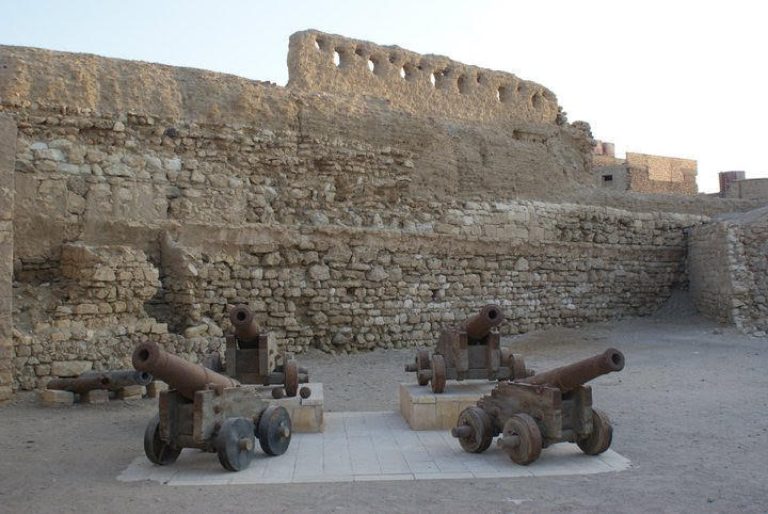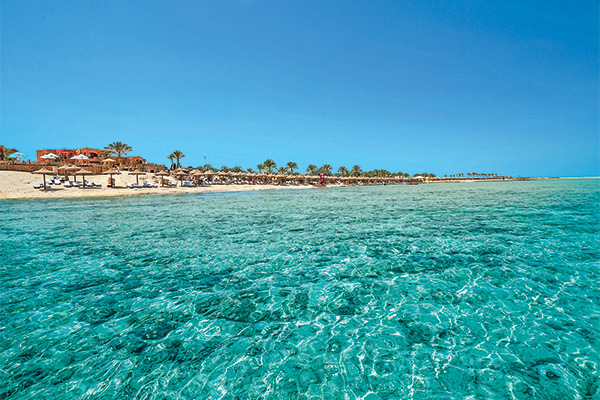Until recently, Marsa Allam was a quiet village for hunting, but this area has an interesting
history.
There is a lot of evidence in the inscriptions and rock paintings that the man of the Stone Age
(before history) in the mountains surrounding the years, where the smooth rock was ideal for
this work. Where they depict hunting scenes that show many animals such as giraffes, ostriches
and fishing dogs
Wadi Hammamat and the Silk Road to Asia
Writings can also be found on the smooth, tall walls of wadi Hammamet, closest to El Quseir ,
but they are still not far from Marsa Alam. These writings, whose history dates back to the
Pharaonic era, including drawings of cane boats dating back to 4000 BC.
evidence indicates that the valley was The main commercial road between ancient Thebes
(Luxor) and the Red Sea, and that it presented a decisively a commercial link through El Quseir
, and the Red Sea and the Silk Road between Thebes and Asia. Historians believe that the
trade road in ancient Egypt not only extended to the Arabian Peninsula but also to the China,
and yet we know The Romans later built the monitoring constellations and the wildfire at regular
intervals along the road, and there is also a possibility that the Jews used the valley when they
left Egypt, although there is no evidence to support that.
Marsa Alam's Ancient Gold and emerald mines

Marsa Alam’s Ancient Gold and emerald mines Despite the importance of the Marsa Economic Region for ancient Egypt.
Also, this surrounding coastal region was rich in copper, bullets, gold, emeralds and semi -generous stones, and it is believed that the region contained the first emerald mines anywhere in the world and was the
only source of emeralds for the Roman Empire.
You can still visit what is known as the Cleopatra mines in the Wadi Al -Jamal National Park ,
south of Marsa Alam, and historians believed that these mines were already used during the
Ptolemaic era, meaning that the history of the mine may return to the second millennium BC.
while there is no conclusive evidence that links the Queen Cleopatra to the mines except All the
reasons here believed that she was working in her time as Cleopatra loved jewelry and she
liked green generous stones more than anything else until she gave the emerald inscribed with
her image of ambassadors and Liwius Caesar and additional evidence can be found on emerald
mining in the desert at that time in The local desert valleys there is a large temple carved in the
rock that can be seen in SICIT about 80 km southwest of Marsa Alam, which is the typical of the
Ptolemaic era. To the precise location.
We found a dateable artifact, which is a Roman coin from the era of Emperor Nero in the first
century AD. By this time, there were no less than 9 mining villages on an area of 70 square
kilometers, the largest of which was in Naqrus and Siket, and the Romans called the area
Samragdos, or the Emerald Mountains.
It was almost certain that it was the only emerald mining area in the Roman Empire, and these
mines continued to be used until the fourteenth century. But their use decreased after that when
emeralds were imported from India. The mountainous Red Sea coast was also a source of
granite for the empire, as they used slaves to extract the stone from the mountains, and it can
be found in It is located in one of the Roman granite quarry complexes, a two-hour drive north of
Marsa Alam, off the Safaga-Qena Road.
It is believed that during the reign of Ptolemy II, the first road was established linking Marsa
Alam on the Red Sea with Edfu. This road passed through what is now known as Wadi El
Gemal National Park. The main goal of the road was to transport emeralds and precious stones
from Marsa Alam to Edfu, so that they would then be transported to the Edfu River. To charge it.
Historians estimate that the Egyptian Eastern Desert produced about 30 types of precious
stones and minerals, and that before 1000 BC, there were more than 70 gold mines, a large
part of the legendary wealth of ancient Egypt.
Some gold mines continued to operate even under British administration during the early
twentieth century before they were closed due to the high cost of extraction, but these mines
returned to work again in the first decade of this century and were reopened by foreign investors
using the latest mining techniques.
The Ottomans, Britain and France fight for El Quseir

In 1571, the Ottoman Sultan Selim I constructed fort on high ground overlooking the port of
Qusayr to protect both the port and Ottoman trade across the Red Sea. You can visit this fort by
going to the city of Quseir, which is a short distance from Marsa Alam.
In 1799, the French army, led by Napoleon, took control of the city and the fort. He expanded
the walls and fortified them with cannons. Shortly thereafter, an attack was made by the British
battleships HMS Daedalus and HMS Fox, and this fort took the lead.
However, in June 1801, the French army finally abandoned the fort when an invasion force of
6,000 British and Indian soldiers landed at Quseir. These forces then crossed from Quseir to
Qena on the Nile River and captured it, an achievement that helped lead the French forces out
of Egypt.
Today, at the main gate of the castle, you can buy a ticket to take a 40-minute tour in order to
take a look at this great fort, including small exhibits on the history of the region, Bedouin life,
and traditions.
Tourism comes to Marsa Alam
During the late 1980s and early1990s, when the resorts and tourist villages in Hurghada and
Sharm El Sheikh began to flourish in the north, some began to realize that Marsa Alam in the
south, with its pristine beaches and coral reefs, had enormous tourism potential.
In 2001, Marsa Alam obtained its first international airport, the only airport run by a private
sector in Egypt.The M.A . Kharafi Group was granted a 40-year concession, and shortly after
the completion of this airport, the first scheduled flights began. In 2007, the construction of a
new road linking Edfu and Marsa was completed. science .
The number of tour operators coming to Marsa Alam is now increasing, and Marsa Alam has
begun to become one of the most important tourist countries.
At the same time, the Covid-19 pandemic, the ongoing global downturn, threatens to curb the
tourism boom in Marsa Alam, at least temporarily. This was underlined when Thomas Cook,
the 178-year-old travel agency and airline company, one of the major airlines, went bankrupt,
and this was followed by the bankruptcy of German wings In 2020 and also in 2020, the Sun
EXperius Deutschland company went bankrupt, but despite this, tourism returned again with the
end of the Covid-19 crisis, and Marsa Alam is still taking all precautions against Covid-19.

Comment (0)